Are you seeking a truly unique, spiritual, and flavor-filled experience? Holy Week in Peru is your answer! Picture yourself walking atop vibrant floral carpets that transform the streets into a kaleidoscope of colors, breathing in the fragrant aromas of sacred dishes like Mazamorra Morada or Good Friday Stew, and feeling the electric energy of processions so moving they bring tears to your eyes. This isn’t just any trip; it’s a complete immersion into Peru’s most authentic expressions of faith, culture, and culinary tradition.
From the mystical city of Cusco, where Inca and colonial history blend into singular rituals, to Ayacucho, the “City of Churches,” with its breathtaking nighttime processions, here you’ll discover the seven unmissable destinations to experience the most intense Holy Week of your life. Ready to be moved, delighted, and connected to the divine? Keep reading to uncover WHERE, WHEN, and HOW to live this once-in-a-lifetime experience!
WARNING: After reading this, YOU’LL WANT TO PACK YOUR BAGS IMMEDIATELY!
- 1. Holy Week in Ayacucho 2025: Peru’s Most Spectacular Religious Experience
- 2. Holy Week in Cusco 2025: The Divine Fusion of Inca Tradition and Christian Faith
- 3. Holy Week in Cajamarca 2025: Fervor, Tradition, and Andean Flavors
- 4. Holy Week in Arequipa 2025: The Most Spectacular Celebration in Southern Peru
- 5. Holy Week in Lima 2025: Peru’s Grandest Religious Celebration
- 6. Holy Week in Puno 2025: The Magical Fusion of Faith, Andean Traditions, & Catholic Devotion
- 7. Holy Week in Huancayo 2025: Andean Tradition & Religious Fervor
- You may be interested in:
1. Holy Week in Ayacucho 2025: Peru’s Most Spectacular Religious Experience
Discover why Ayacucho, known as “The City of 33 Churches,” is the epicenter of Holy Week in Peru and immerse yourself in 10 days of passion, tradition, and pure emotion. From spine-tingling processions to flavors that will captivate your palate, here’s EVERYTHING you need to know to experience this unparalleled celebration.
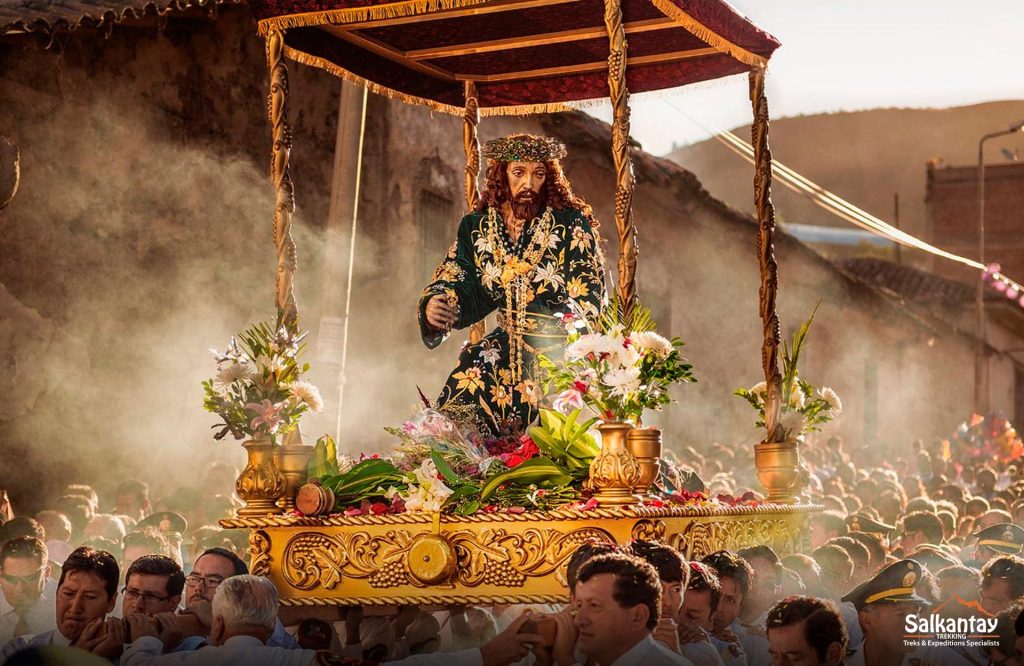
Why is Ayacucho the #1 Holy Week destination?
- Nighttime processions illuminate the city with candlelight and sacred hymns.
- Floral carpets transform streets into ephemeral works of art.
- Sacred gastronomy: Savor Mazamorra Morada and traditional Holy Week sweets.
- Cultural fusion: Christian rituals with Andean roots are unlike anything you’ve seen.
Sacred Itinerary: How Holy Week Unfolds in Ayacucho.
- Friday of Sorrows: Night procession from La Magdalena Church (emotion from day one!).
- Palm Sunday: Palm blessings and reenactment of Jesus’ entry to Jerusalem before Ayacucho’s stunning Cathedral.
- Holy Thursday: Chrism Mass and the symbolic Foot Washing Ceremony.
- Good Friday: The most moving procession, departing from Santo Domingo, with sacred statues that seem to come alive.
- Holy Saturday: Pascua Toro festival at Acuchimay Hill tradition and revelry!
- Easter Sunday: A grand finale of fireworks, bell tolls, and joyful hymns.
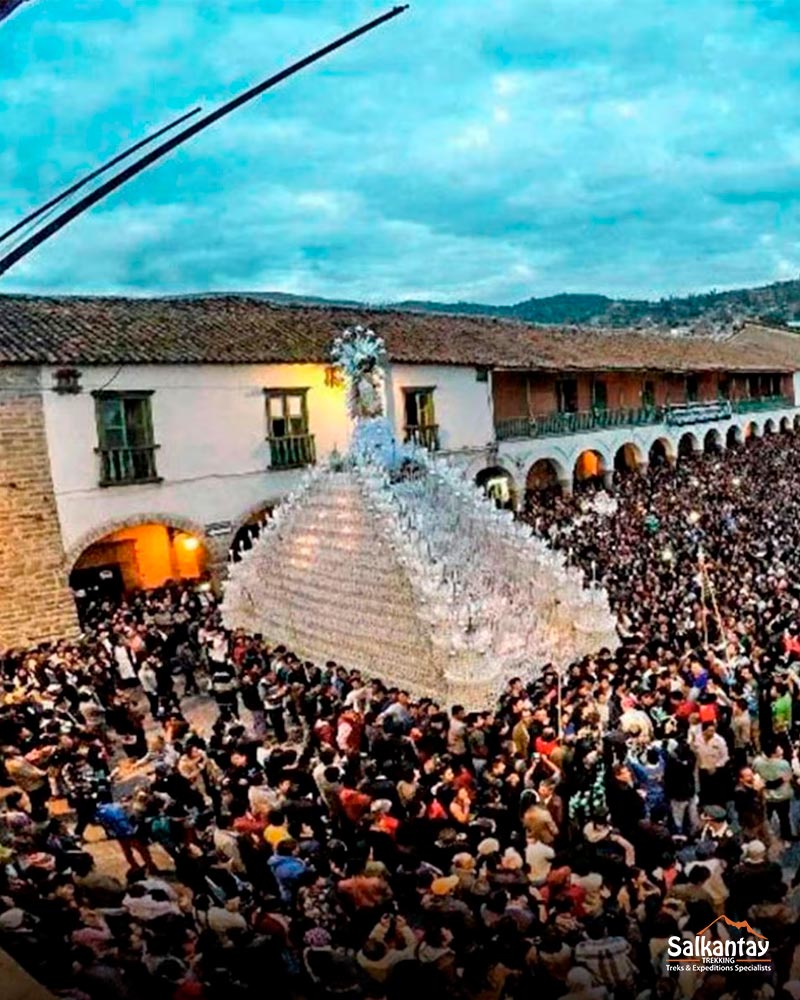
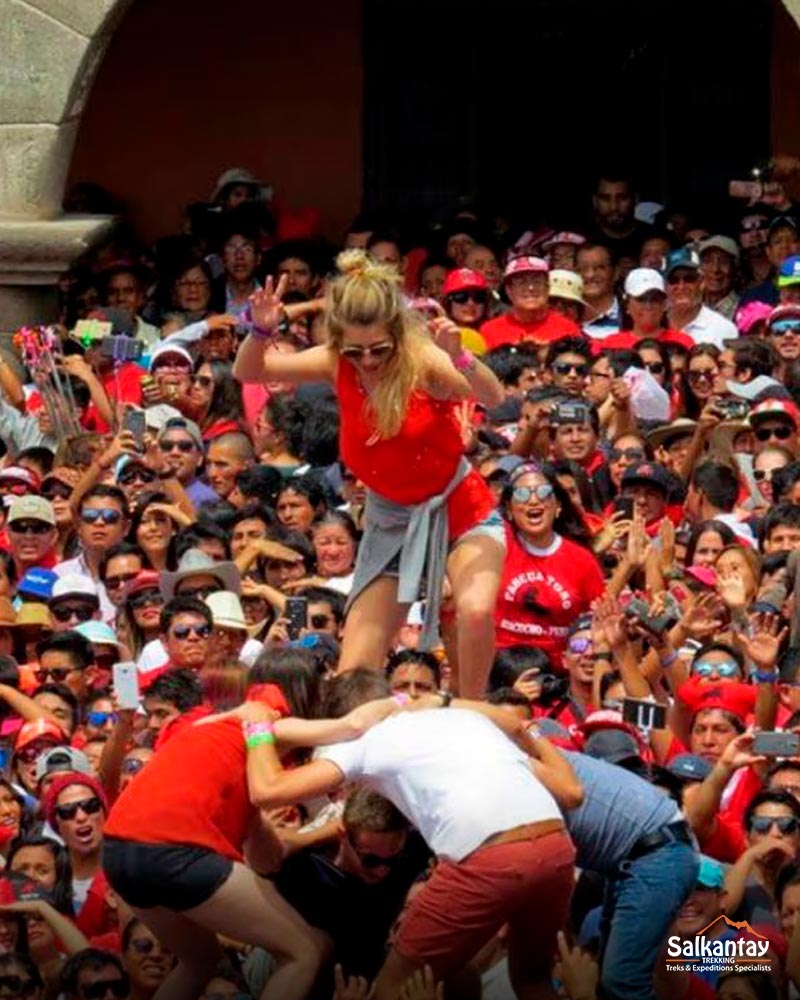
Top 7 Must-See Attractions in Ayacucho
- Acuchimay Lookout: Panoramic views of the city.
- Pampa de Ayacucho Historic Sanctuary: Where Peru’s independence was sealed.
- Wari Archaeological Complex: Explore the capital of the first Andean empire.
- Vilcashuamán: An ushnu (Inca altar) that will leave you speechless.
- Qorihuillca Canyons: Surreal landscapes and adventure.
- Central Market: Authentic flavors and unique handicrafts.
- Jirón 28 de Julio: The heart of Ayacucho, pulsing with life and history.
How to Get to Ayacucho?
- By air: 1 hour from Lima (the fastest way!).
- By bus: 8–10 hours via scenic highways (breathtaking views included).
- Take the Central Highway or Panamericana Sur (7-8 hours of adventure) by car.
Don’t Miss Out, Ayacucho Awaits You This Holy Week!
Ready for an experience that blends spirituality, culture, and adventure? Ayacucho is the perfect destination for:
- Spiritual travelers seeking profound connection.
- Culture lovers craving authentic traditions.
- Foodies are eager for unique flavors.
- Adventurers yearning to explore ancient ruins and stunning landscapes.
2. Holy Week in Cusco 2025: The Divine Fusion of Inca Tradition and Christian Faith
Experience the most mystical Holy Week in the Americas at the “navel of the world,” where sacred processions blend with ancient rituals and gastronomy becomes an offering. Discover why Cusco is the #1 destination for a Holy Week filled with Andean magic.
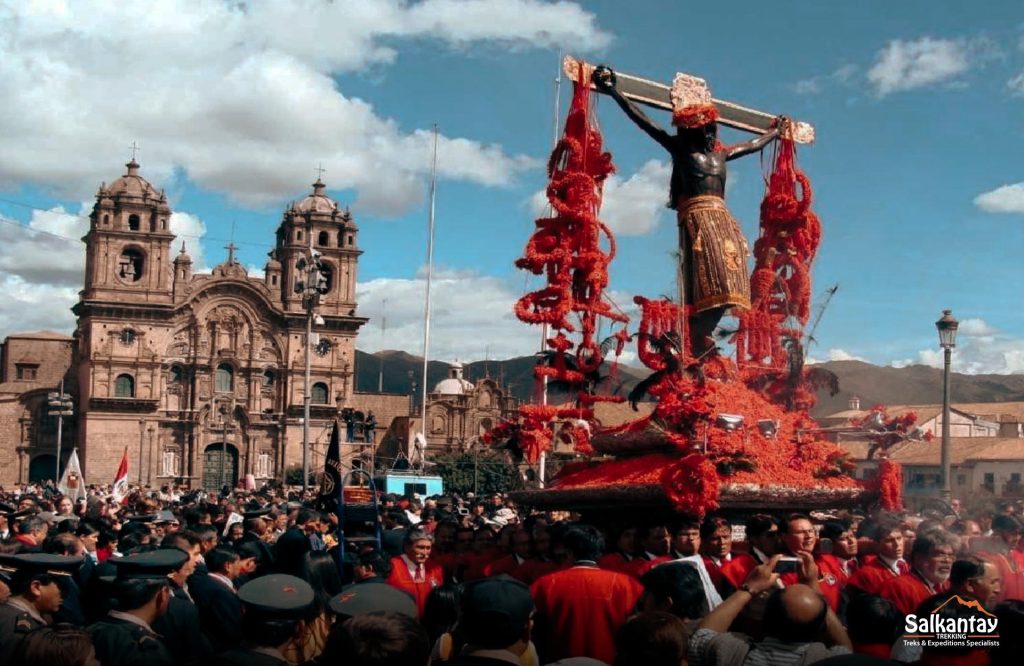
Why Experience Holy Week in Cusco?
Procesión del “Taytacha Temblores”: El Cristo moreno que detuvo terremotos y hoy es Patrono del Cusco (¡Declarado Patrimonio Cultural!).
- “Taytacha Temblores” Procession: The revered dark-skinned Christ who halted earthquakes is now Cusco’s patron (declared Cultural Heritage!).
- Sacred Flavors: The 12 traditional dishes you must try (from bacalao to rice pudding!).
- Route of the 7 Churches: A pilgrimage brimming with faith and hopeful wishes.
- Unique Fusion: Where Christian incense meets Inca cosmology.
Sacred Itinerary: The Week That Moves Cusco
- Palm Sunday: Palm blessings in the Plaza de Armas (just as in Inca times!).
- Holy Monday: Procession of the Lord of the Earthquakes (the most thrilling, drawing thousands).
- Holy Thursday: Route of the 7 Churches (making wishes with devotion).
- Good Friday: The 12 traditional Cusco dishes (a divine explosion of flavors!).
- Holy Saturday: Easter Vigil at the Cathedral (Peru’s colonial jewel).
- Easter Sunday: A celebration of colors and joy (Cusco reborn!).
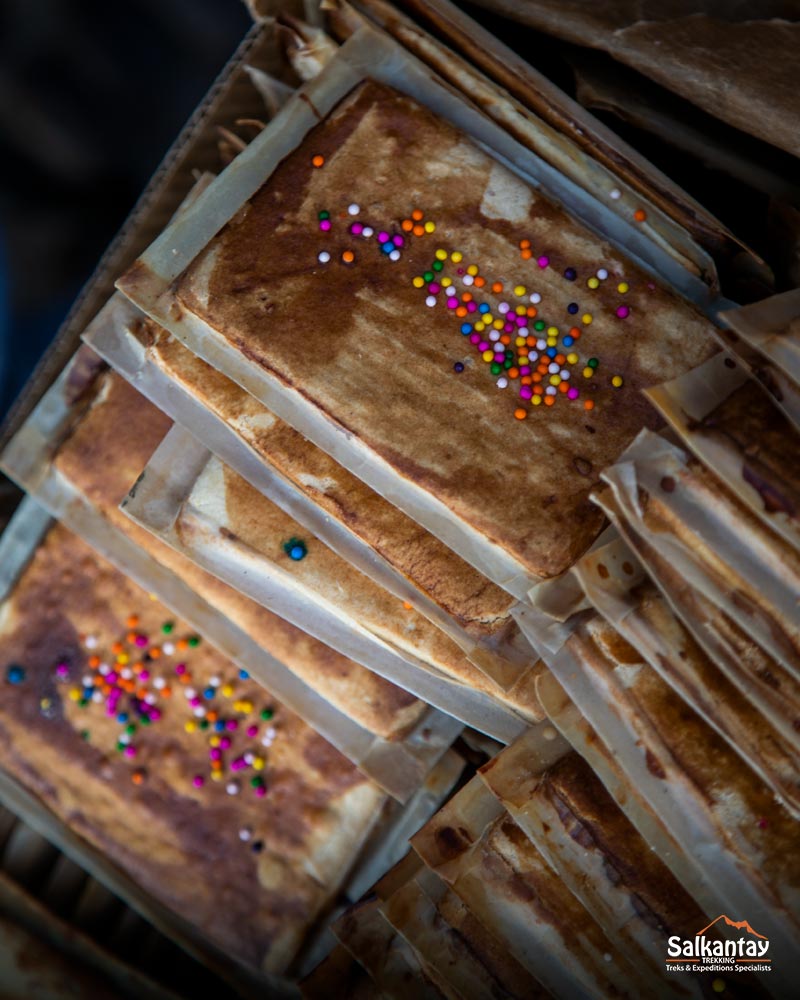
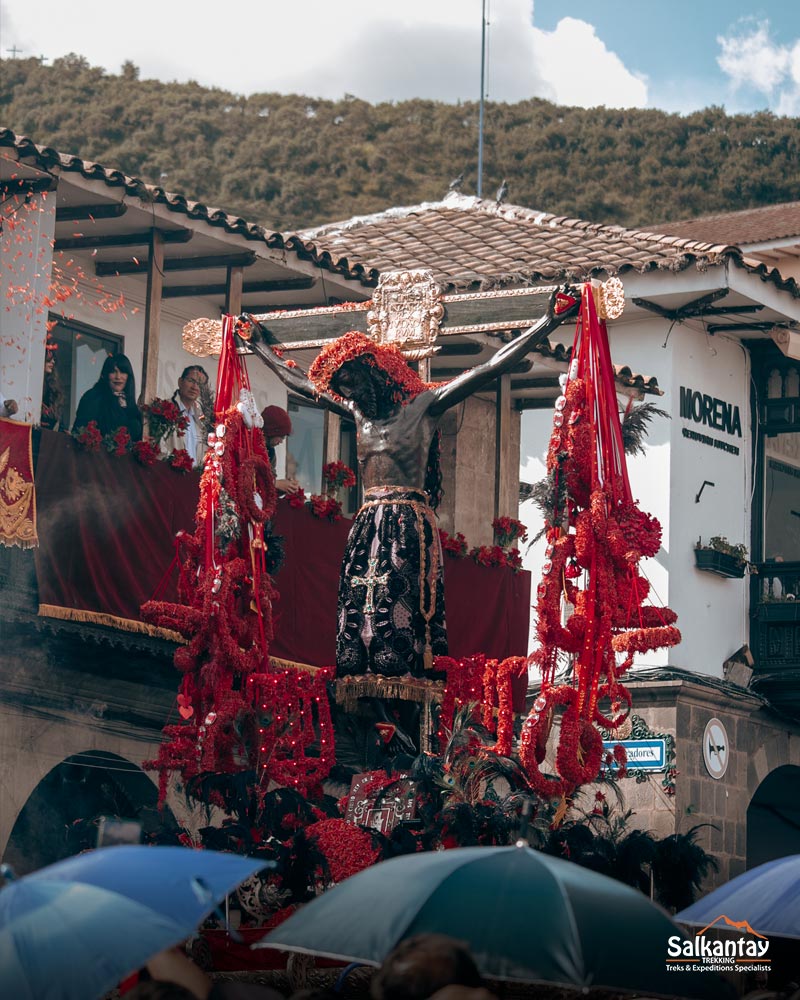
Top 7 Unique Holy Week Experiences
- Savor the 12 dishes: From salted cod stir-fry to Holy Week empanadas.
- Visit the Cathedral: Home to the Lord of the Earthquakes (and a Last Supper painting featuring a guinea pig!).
- Explore San Pedro Market: For pan chuta and mazamorra morada.
- Sacred Valley Tour: Discover colonial churches built atop Inca foundations.
- Rainbow Mountain: A spiritual hike amid the festivities.
- Qeswachaka: The last living Inca bridge (woven as it was 500 years ago).
- Humantay Lagoon: Where the landscape feels like a divine miracle.
How to Get to Cusco?
- By air: 1.5 hours from Lima (with breathtaking Andean views included!).
- By bus: 20 hours through epic landscapes (perfect for budget travelers).
- By car: The Lima-Nazca-Cusco route (for the most adventurous!).
Cusco Awaits You With Open Arms!
Ready for a Holy Week that blends:
- Andean mysticism with Catholic faith.
- Gastronomy as ritual (the 12 dishes await!).
- Soul-stirring processions.
- Adventures in sacred landscapes.
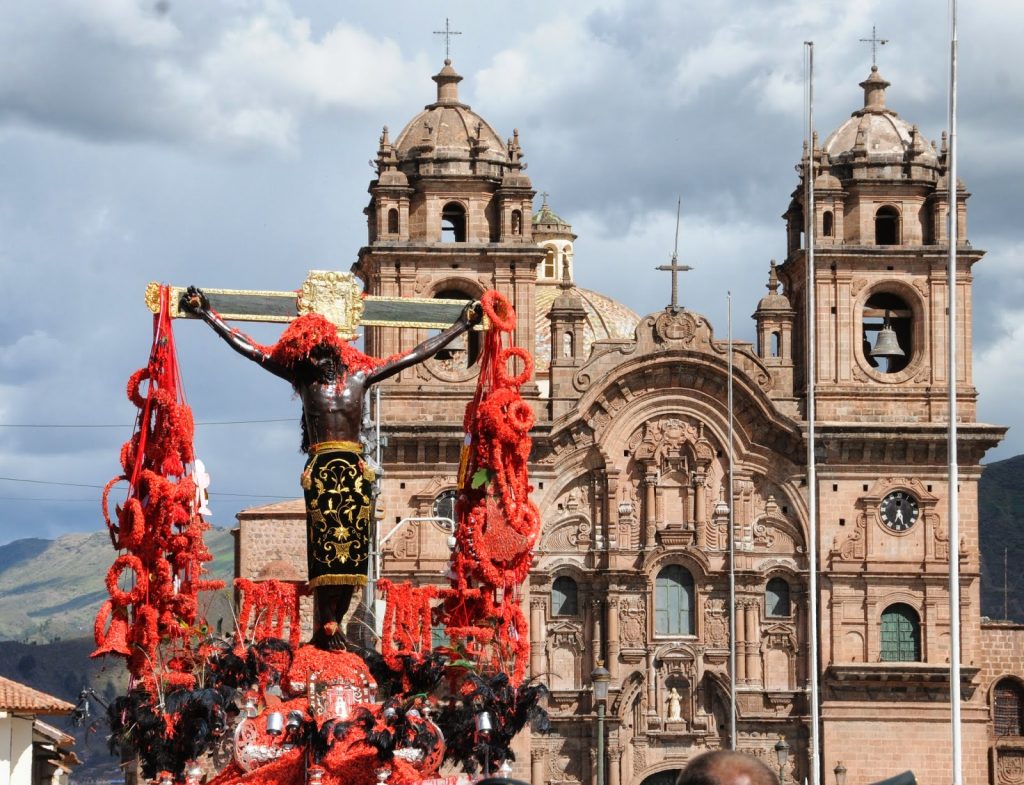
3. Holy Week in Cajamarca 2025: Fervor, Tradition, and Andean Flavors
Where faith intertwines with ancient traditions and colonial flavors captivate your palate. Discover why this Andean gem offers a religious and cultural experience unlike any other in Peru.
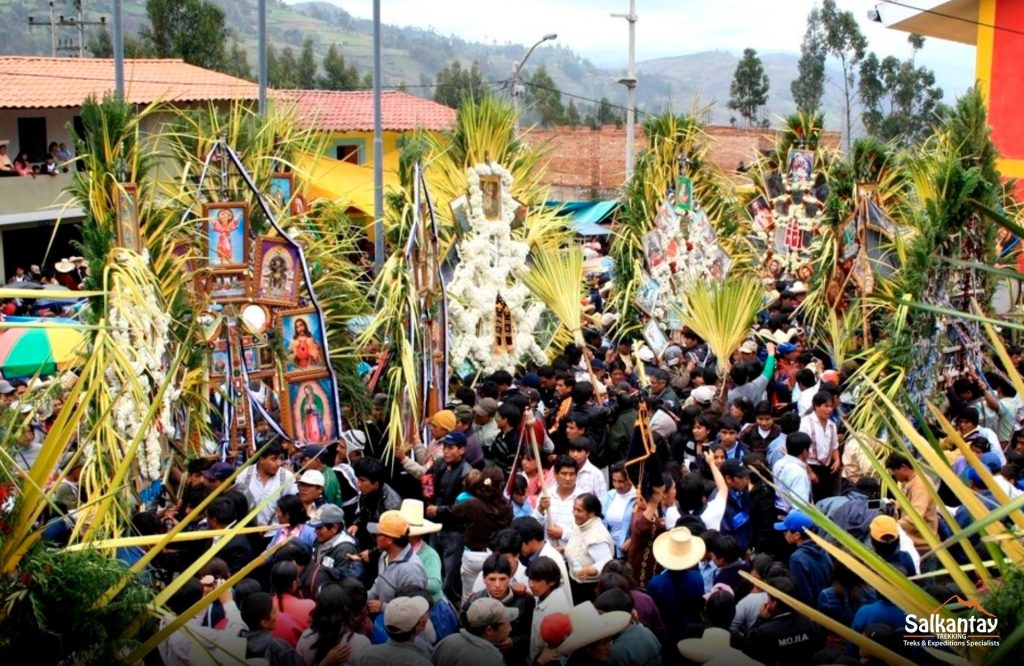
3 Reasons to Experience Holy Week in Cajamarca
- Festival of the Crosses: A unique spectacle where mirrors-adorned crosses (reflecting devotees’ souls) parade through Porcón’s streets.
- Sacred Gastronomy: Savor renowned roasted guinea pig, manjar blanco, and artisanal cheeses in time-honored traditions.
- Colonial Architecture: Processions at the majestic Cathedral and Belén Church, jewels of Peruvian Baroque.
Magical Itinerary: How Holy Week Unfolds
- Palm Sunday
- Palm blessings in Plaza de Armas.
- Reenactment of Jerusalem’s entry.
- Holy Wednesday
- Festival of the Crosses in Porcón (just 10 minutes from Cajamarca!).
- Procession with flowered crosses and Andean rituals.
- Holy Thursday
- Pilgrimage to 7 colonial churches.
- Foot-washing ceremony at the Cathedral.
- Good Friday
- Tasting of 12 traditional dishes.
- Holy Sepulchre procession.
- Easter Sunday
- Easter Mass with fireworks.
- Gastronomic fair in the historic center.
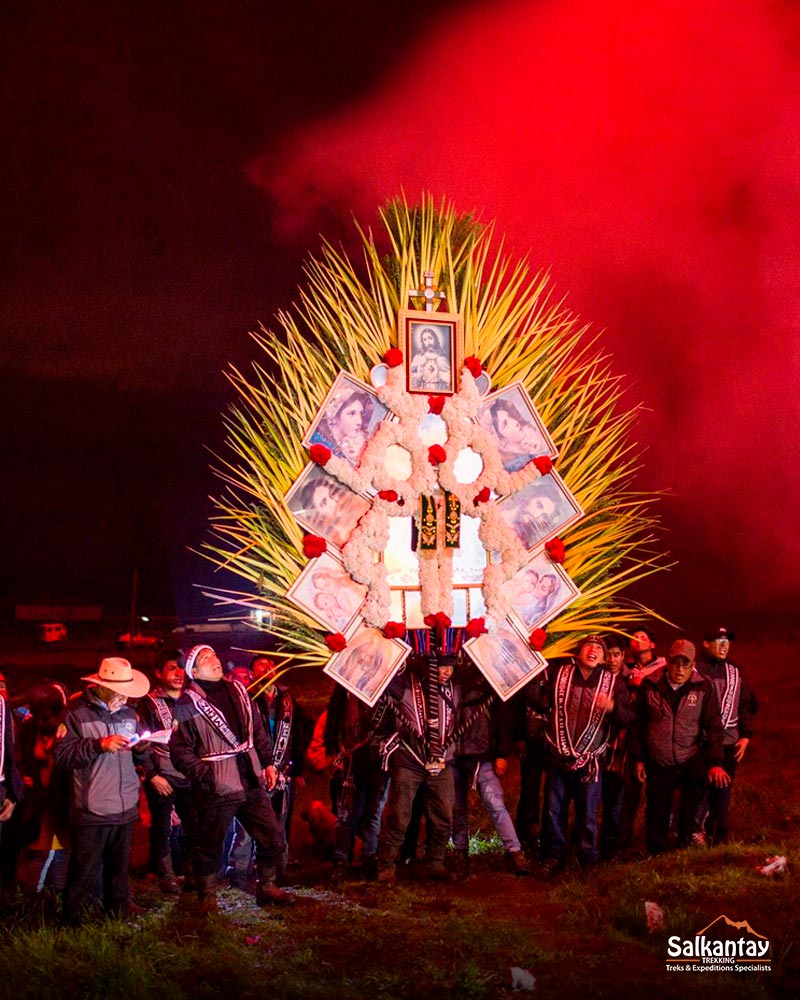
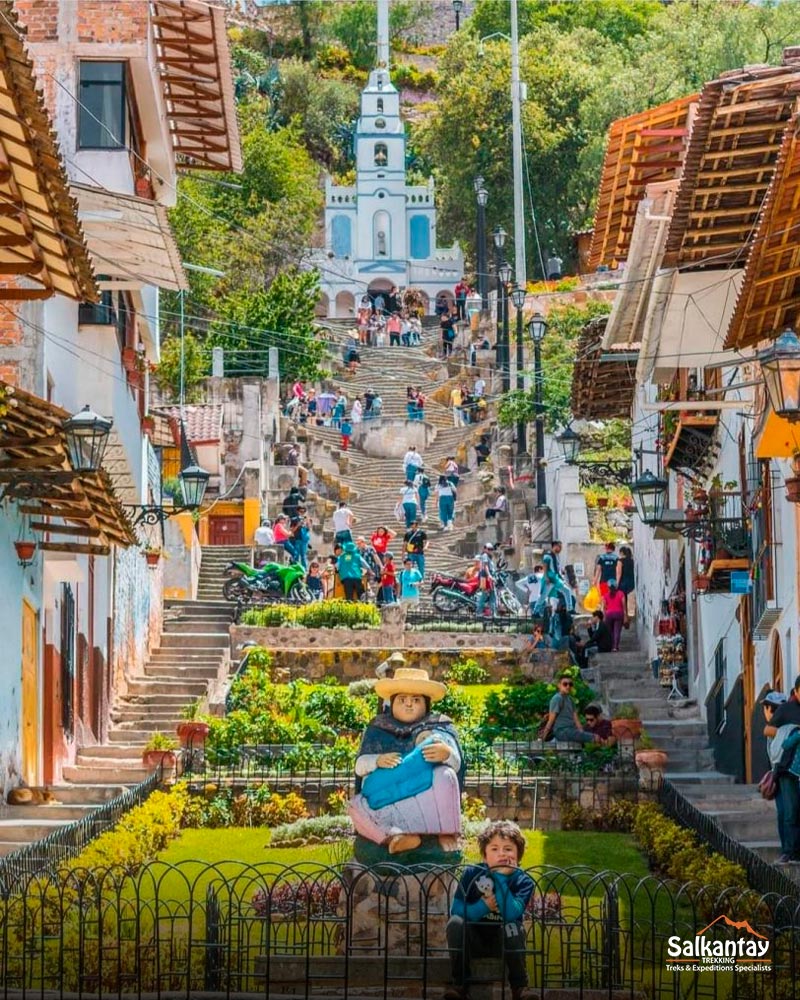
Top 5 Unmissable Experiences
- Taste “Sacred Guinea Pig”: Prepared exclusively for Holy Week with aromatic herbs.
- Baños del Inca Thermal Baths: Relax in waters once used by Atahualpa.
- Cheese Route: Visit dairy farms and sample Peru’s finest cheeses.
- Cumbemayo: Explore the pre-Inca sanctuary and its stone forests.
- Artisan Workshops: Learn weaving techniques from Cajamarca’s ancient masters.
How to Get There
- By air: 1.5 hours from Lima (daily flights).
- By bus: 16 h via the most scenic route (Cruz del Sur recommended).
- By car: Lima-Trujillo-Cajamarca route (spectacular landscapes).
Cajamarca Awaits You With Open Arms!
Experience a Holy Week that blends:
- Andean mysticism in every ritual.
- Flavors that are cultural heritage (Peru’s best manjar blanco!).
- Timeless colonial architecture.
- Crisp Andean air at 2,750 masl.
4. Holy Week in Arequipa 2025: The Most Spectacular Celebration in Southern Peru
Experience Holy Week amidst volcanoes and tradition! The White City of Arequipa dresses in splendor to offer a unique experience where religious fervor blends with ancestral rituals and cuisine that will take your breath away. Ready to discover Peru’s most authentic Holy Week?
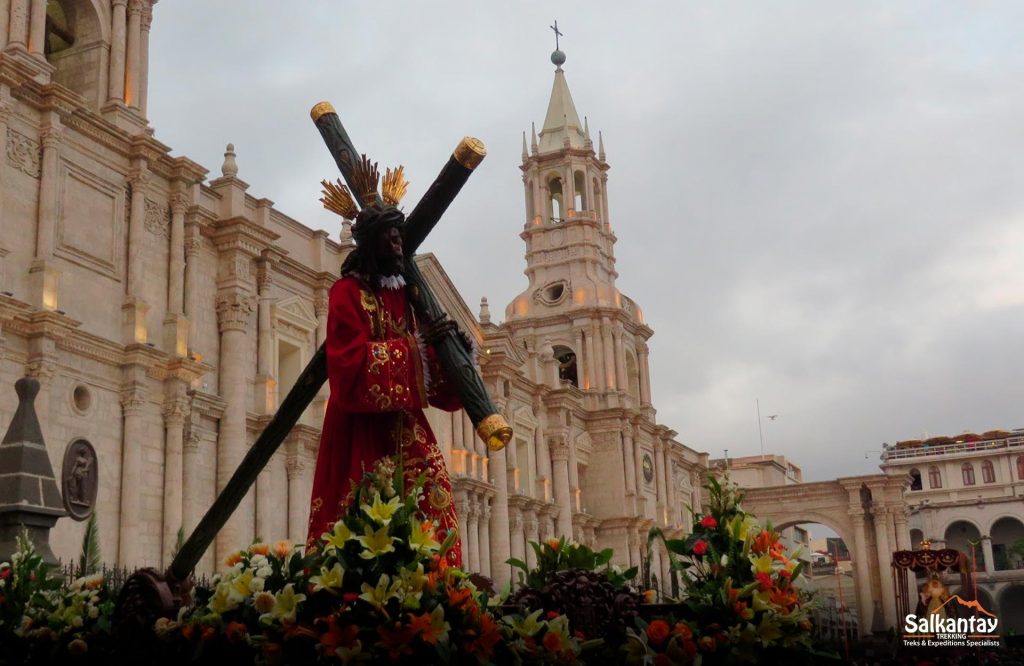
5 Reasons to Choose Arequipa for Holy Week
- The Burning of Judas: A unique spectacle where the traitor burns in flames before the majestic cathedral.
- Sacred Gastronomy: Savor the legendary chupe de Viernes Santo and seven varieties of mazamorra.
- Solemn Processions: Alongside sillar walls that have witnessed centuries of tradition.
- Natural Backdrops: With the Misti Volcano as witness to your spiritual journey.
- Colonial Heritage: Experience the Passion within the Monastery of Santa Catalina, a city within a city.
Passion Itinerary: Day by Day in Arequipa
- Palm Sunday
- Palm blessings in Plaza de Armas.
- Procession among apachetas (Andean altars rich in symbolism).
- Holy Thursday
- Mass of the Lord’s Supper at the cathedral.
- Theatrical Passion plays on cobblestone streets.
- Good Friday
- Holy Sepulchre Procession (guaranteed emotion!).Taste of chupe de Viernes (tradition in every bite!).
- Holy Saturday
- The Burning of Judas (a one-of-a-kind pyrotechnic spectacle!).
- Gastronomic Fair in the historic center.
- Easter Sunday
- Easter Mass with views of Misti Volcano.
- Pilgrimage to the seven principal churches.
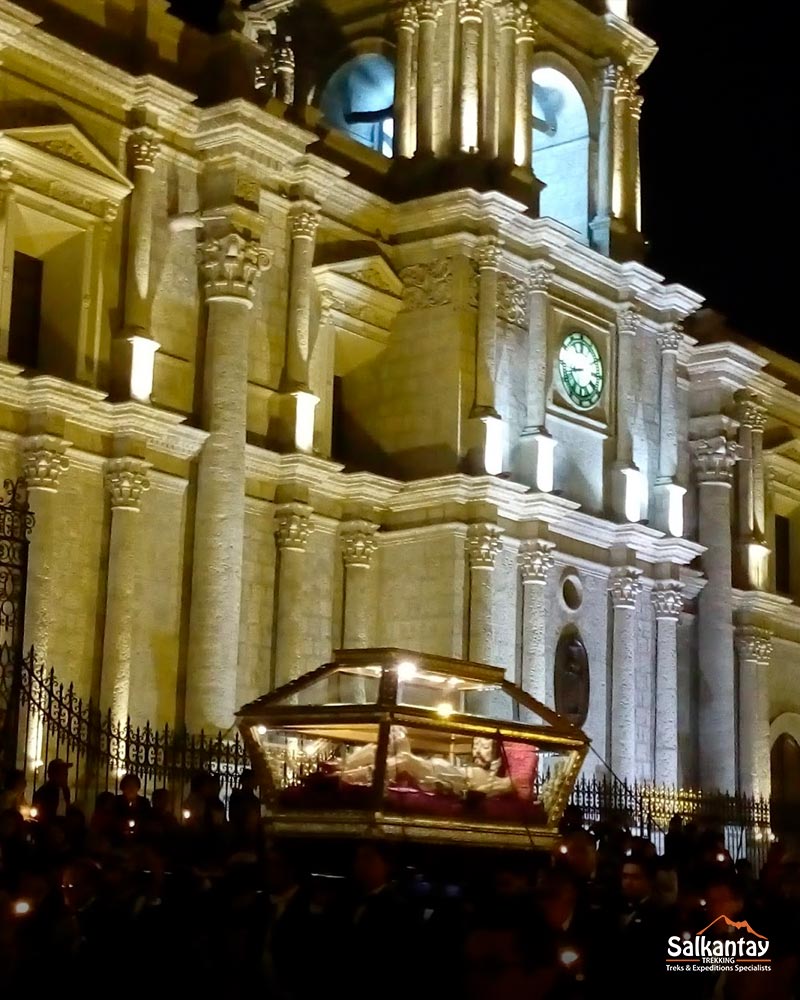
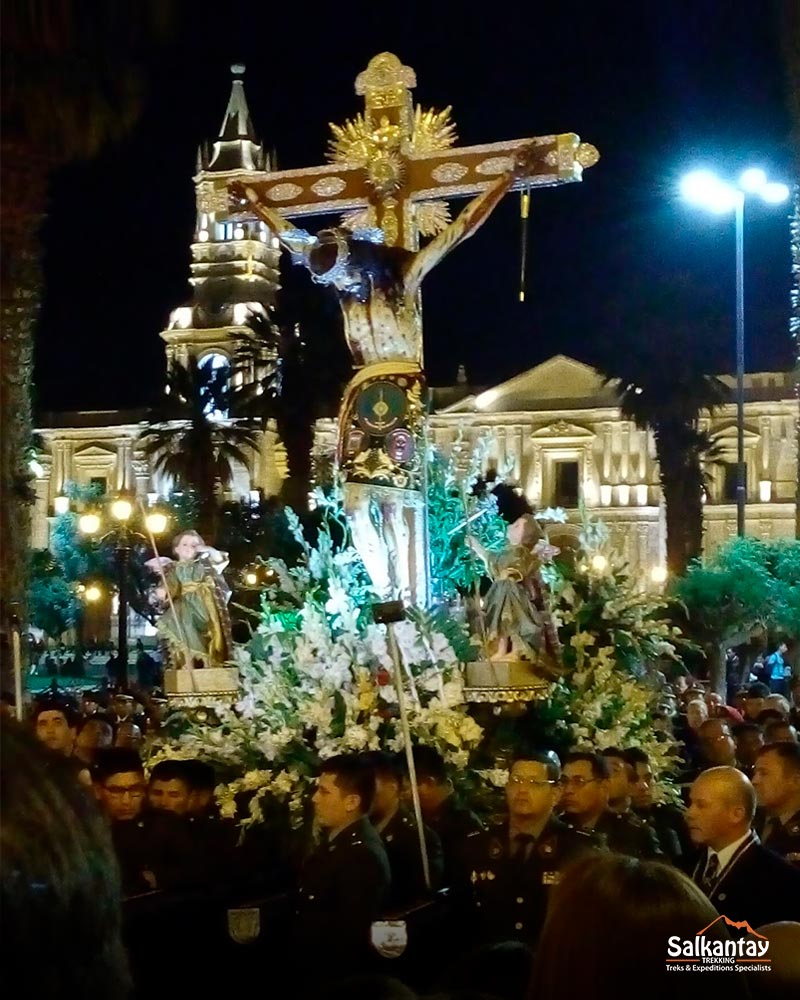
Top 5 Unmissable Experiences
- Meet Mummy Juanita: At the Museo Santuarios Andinos.
- Get Lost in the Labyrinth: Of the Santa Catalina Monastery.
- Try Queso Helado: In Yanahuara Square.
- Sunset Photos: With volcanoes as your backdrop.
- Gastronomic Tour: Through Holy Week’s iconic flavors.
How to Get There
- By air: 1.5 hours from Lima (flights from USD 60).
- By bus: 15 h through breathtaking landscapes (Cruz del Sur recommended).
- By car: Via the Panamericana Sur (an adventure for the bold).
Arequipa Welcomes You With Open Doors!
Experience a Holy Week that combines:
- Colonial mysticism around every corner.
- Flavors that are national heritage.
- Scenery worthy of the silver screen.
- Traditions that have endured for centuries.
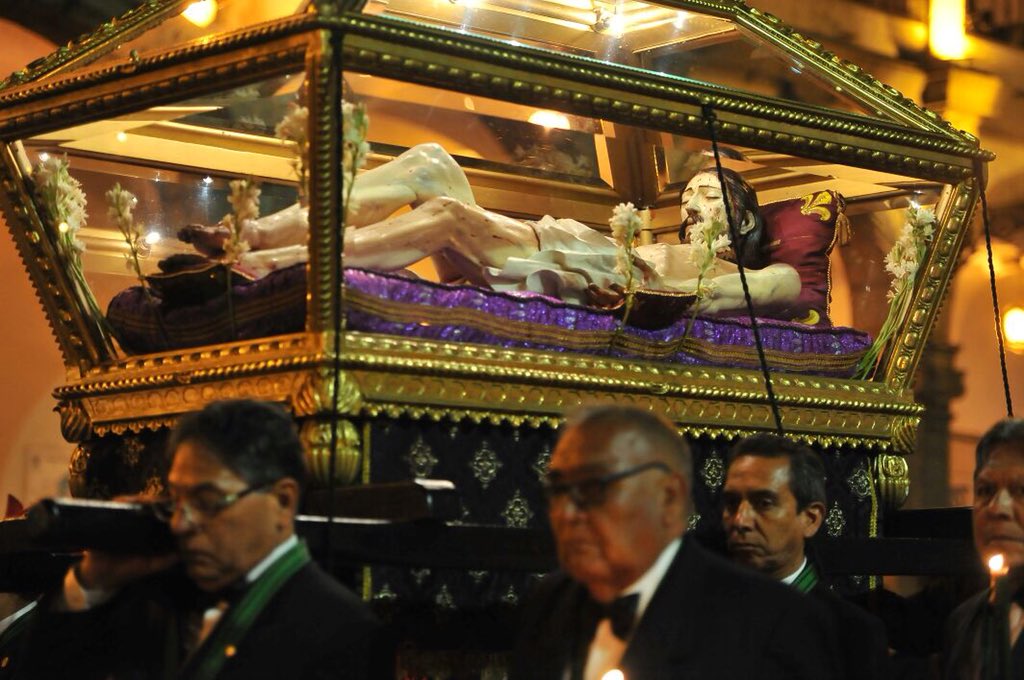
5. Holy Week in Lima 2025: Peru’s Grandest Religious Celebration
Experience Holy Week in Peru’s capital with full fervor and tradition! Lima, declared a Cultural Heritage site for its celebrations, awaits you with breathtaking processions, historic temples, and gastronomy to make your visit a celestial experience.
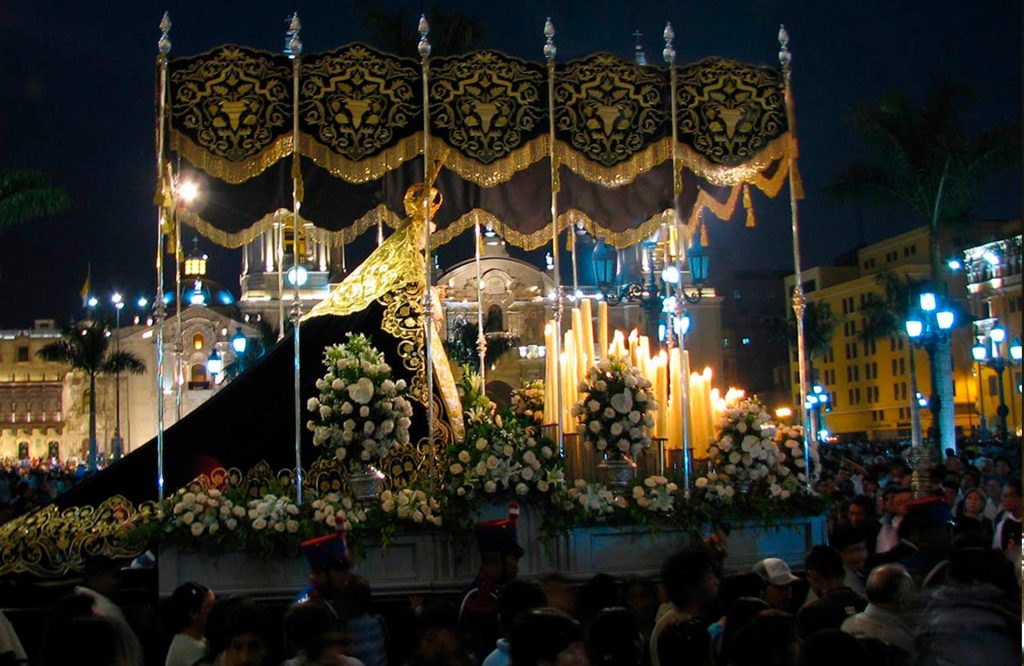
5 Reasons to Experience Holy Week in Lima
- Majestic Processions: From the Lord of Miracles to the Sorrowful Virgin.
- Route of the 7 Churches: A colonial tradition alive in Lima’s heart.
- Sacred Gastronomy: Savor the 12 traditional Lenten dishes.
- Floral Carpet Competition: Ephemeral art covering downtown streets.
- Historical Heritage: Witness Christ’s Passion in colonial mansions and Baroque temples.
Sacred Itinerary: Day by Day in Lima
- Palm Sunday
- Palm blessing at Lima Cathedral.
- Olive branch procession through the Historic Center.
- Holy Thursday
- Mass of the Lord’s Supper at San Francisco.
- Route of the 7 Churches (unmissable tradition!).
- Good Friday
- Monumental Via Crucis in the Historic Center.
- Lenten dish tasting in Barranco.
- Holy Saturday
- Easter Vigil at the Cathedral.
- Burning of Judas in central squares.
- Easter Sunday
- Easter Mass with the Archbishop.
- Gastronomic fair at Parque de la Exposición.
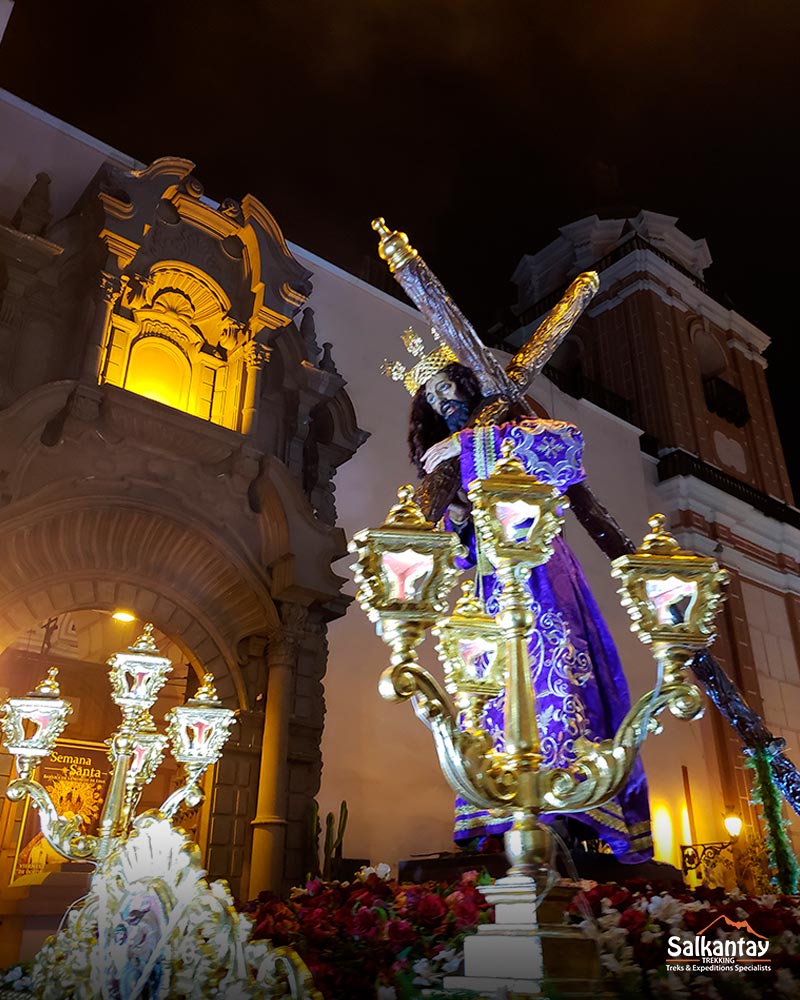
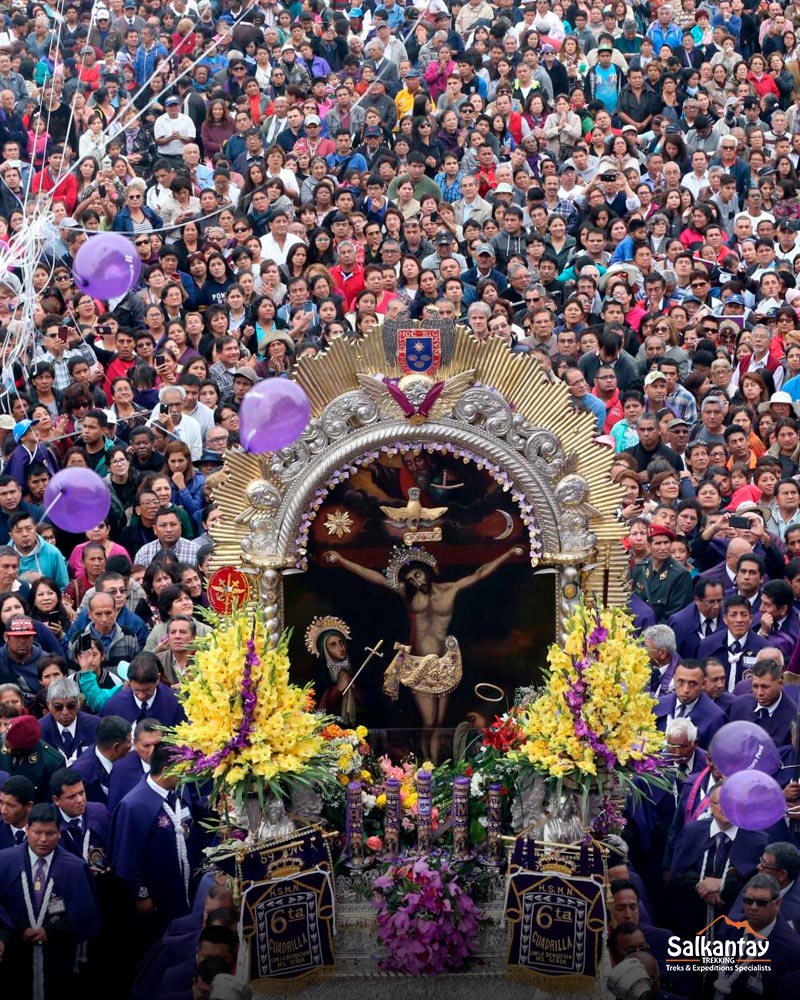
Top 7 Unmissable Experiences
- Explore the San Francisco Catacombs.
- Taste famous picarones at the Magic Water Circuit.
- Admire the Lord of Miracles at his permanent altar.
- Join a Lenten Flavors Gastronomic Tour.
- Visit Museo Larco and its sacred art collection.
- Sunset stroll along the Miraflores Boardwalk.
- Photograph the national floral carpet competition masterpieces.
How to Get There
- By air: Jorge Chávez Airport receives flights worldwide.
- By bus: Plaza Norte and Sur terminals connect to all of Peru.
- By cruise: Callao Port arrivals (October-April only).
- By car: Excellent highways from all regions.
Lima Welcomes You With Open Arms!
Experience a Holy Week that blends:
- Centuries-old traditions declared Cultural Heritage.
- World’s best gastronomy in its Lenten version.
- Viceroyal architecture that transports you to the past.
- Unique events found only in the capital.
Let’s make your spiritual journey an unforgettable experience!
6. Holy Week in Puno 2025: The Magical Fusion of Faith, Andean Traditions, & Catholic Devotion
Experience the most authentic Holy Week in the Altiplano! Puno, Peru’s folkloric capital, invites you to witness extraordinary processions where Catholicism merges with ancestral rituals against the breathtaking backdrop of Lake Titicaca. A spiritual journey that will leave you breathless (and longing to return!).
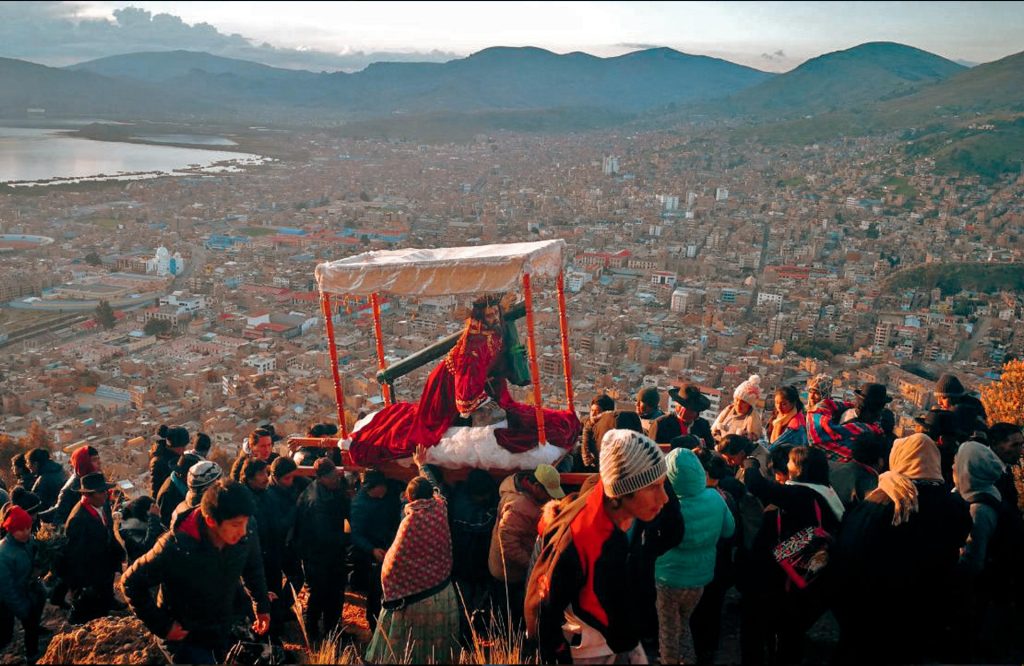
5 Reasons to Experience Holy Week in Puno
- Andean-Flavored Processions: The Lord of the Palms parades amid traditional dances and offerings to Pachamama.
- Magical Vigil Night: Candles reflecting on Titicaca’s waters during Holy Saturday.
- Sacred Gastronomy: Savor chuño colgado (freeze-dried potatoes) and the lake’s blessed trout.
- Illuminated Chullpas: The Sillustani funerary towers are dressed in ceremonial splendor.
- Living Textile Art: Taquile Island weavers create sacred mantles for religious icons.
Sacred Itinerary: Day by Day in the Altiplano
- Palm Sunday
- Palm blessing with quinoa leaves at Puno Cathedral.
- Procession of Taytacha Ramos (the Altiplano’s Dark-Skinned Christ).
- Holy Thursday
- Mass in Quechua & Aymara at the Virgin of Candelaria Sanctuary.
- Pilgrimage to 7 colonial church monuments.
- Good Friday
- Living Via Crucis with locals dressed as Andean Romans.
- A traditional dish auction takes place in the Plaza de Armas.
- Holy Saturday
- The New Fire ceremony includes the use of coca leaves and myrrh.
- Torchlight procession along the lakeshore.
- Easter Sunday
- Sun Festival in Chucuito (unique syncretism).
- Votive textile fair featuring sacred weavings.
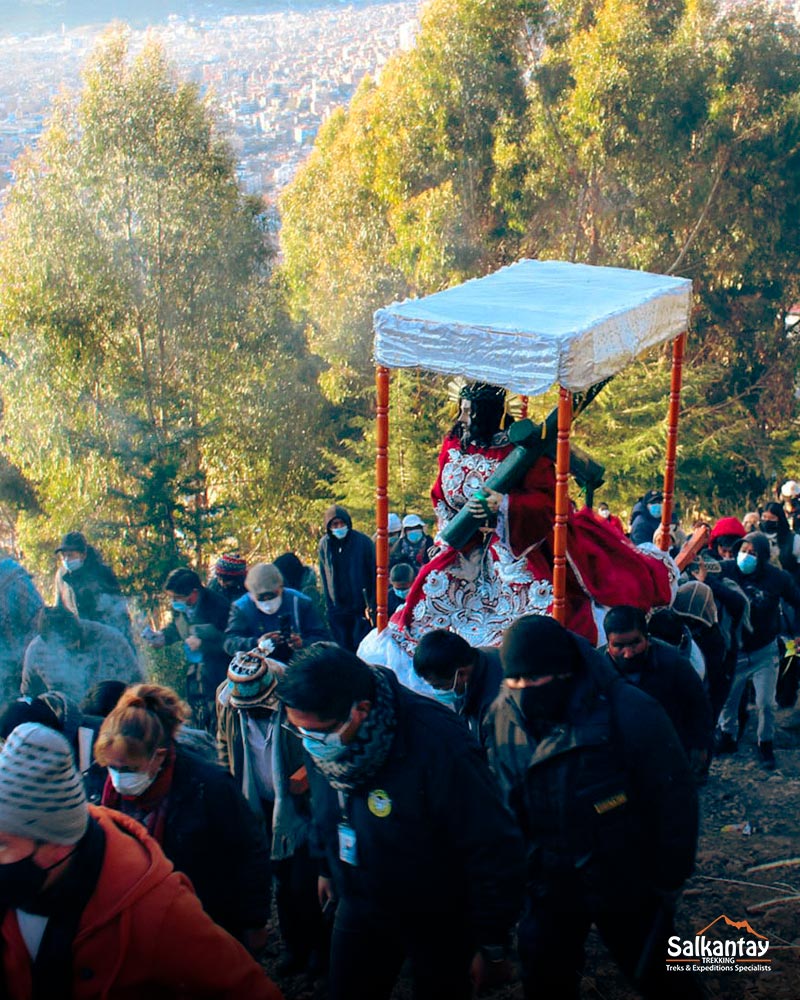
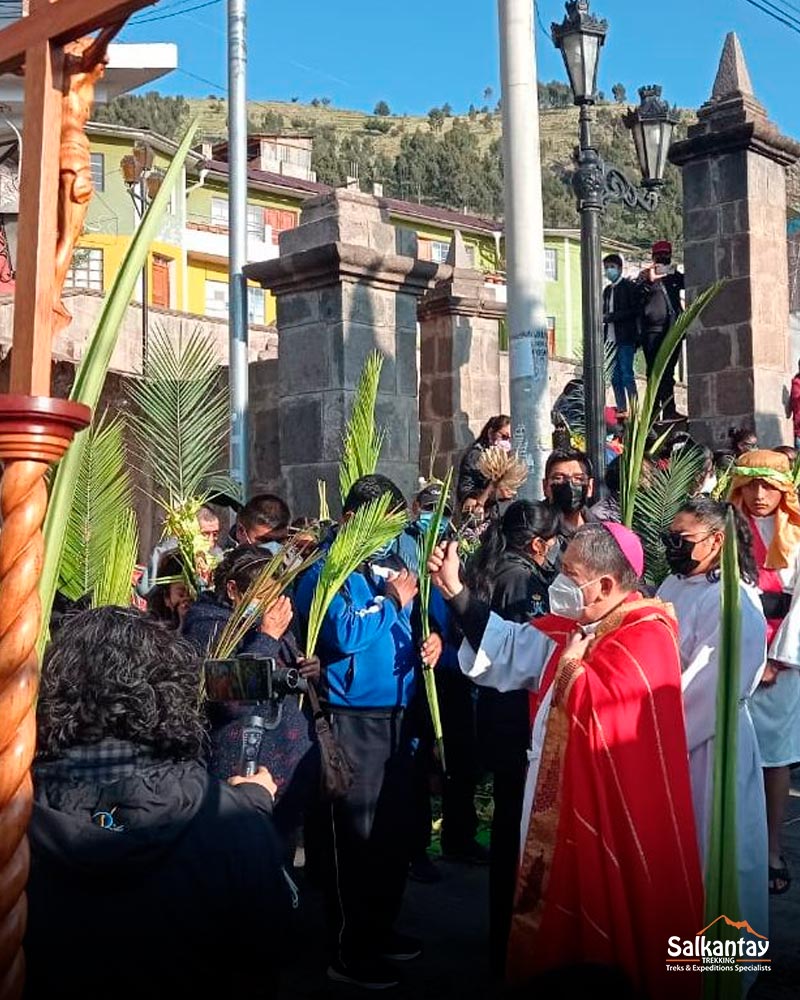
Top 7 Unmissable Experiences
- A sunrise voyage to the Uros Floating Islands takes place during the vigil
- Taste Wajta (ceremonial bread) fresh from clay ovens.
- Photograph colonial facades adorned with Holy Week finery.
- Join the Aymara choirs during Good Friday services.
- Purchase votive textiles at the Central Market.
- Sunset ascent to Sillustani’s funeral towers.
- Dance the Diablada Pascual in the main square.
How to Get There
- Fly to Juliaca (1h40m from Lima) + 45 min transfer to Puno.
- Overnight bus (20hr Andean adventure via Cruz del Sur).
- The premium option includes a luxury cruise from Bolivia (subject to seasonal availability)
Puno Awaits You With Open Arms!
Experience a Holy Week that blends:
- Andean mysticism in every ritual.
- Sacred landscapes (the world’s highest navigable lake!).
- Living textile art telling millennial stories.
- Unique flavors that honor the earth.
7. Holy Week in Huancayo 2025: Andean Tradition & Religious Fervor
Experience the most authentic Holy Week in the Central Andes! Huancayo welcomes you with vibrant processions, ancestral flavors, and faith that permeates the air. Discover why this celebration is a Cultural Heritage of the region and an experience that will touch your soul.
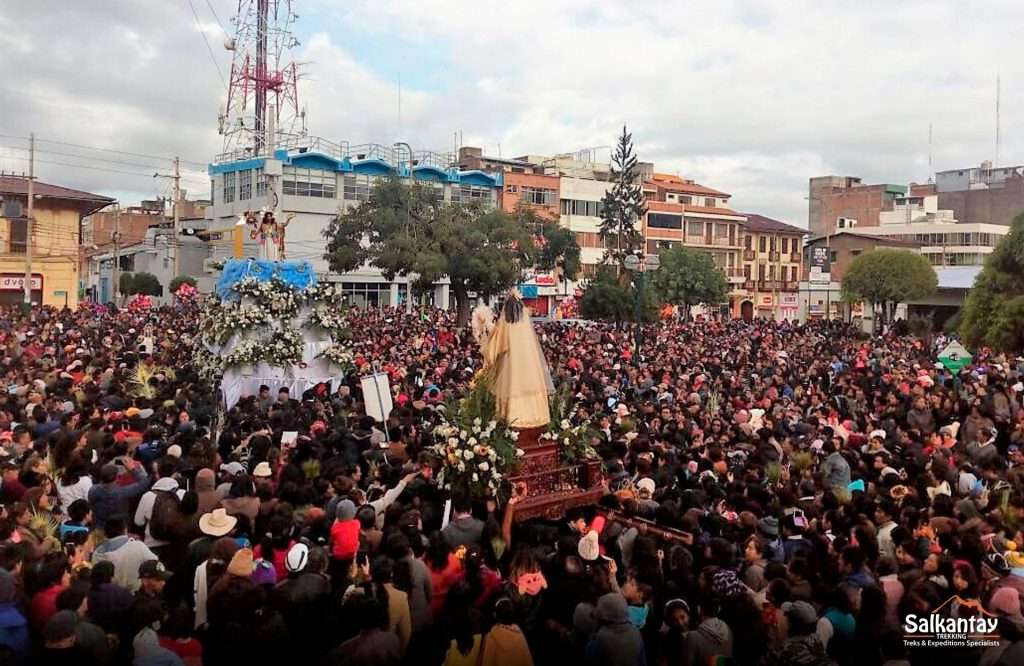
5 Reasons to Choose Huancayo for Holy Week
- Unique Processions: The Lord of the Palms parades amid scissor dancers and offerings to the earth.
- Sacred Flavors: Savor blessed Pachamanca and ceremonial roasted guinea pig.
- Living Art: Traditional weavers craft sacred mantles for religious icons.
- Magical Syncretism: Catholic rituals blended with Wanka traditions.
- Blessed Landscapes: Celebrate amid the breathtaking Mantaro Valley.
Spiritual Itinerary: Day by Day in Huancayo
- Palm Sunday
- Palm blessing with Andean flowers at the cathedral.
- Grand procession featuring scissor dancers.
- Holy Thursday
- Chrism Mass with Quechua choirs.
- Pilgrimage to 7 colonial church monuments.
- Good Friday
- Living Via Crucis with traditionally dressed locals.
- Tasting of 12 Lenten dishes.
- Holy Saturday
- New Fire ceremony with coca leaves and myrrh.
- Torchlit nighttime procession.
- Easter Sunday
- Grand Artisan Fair at Plaza de la Constitución.
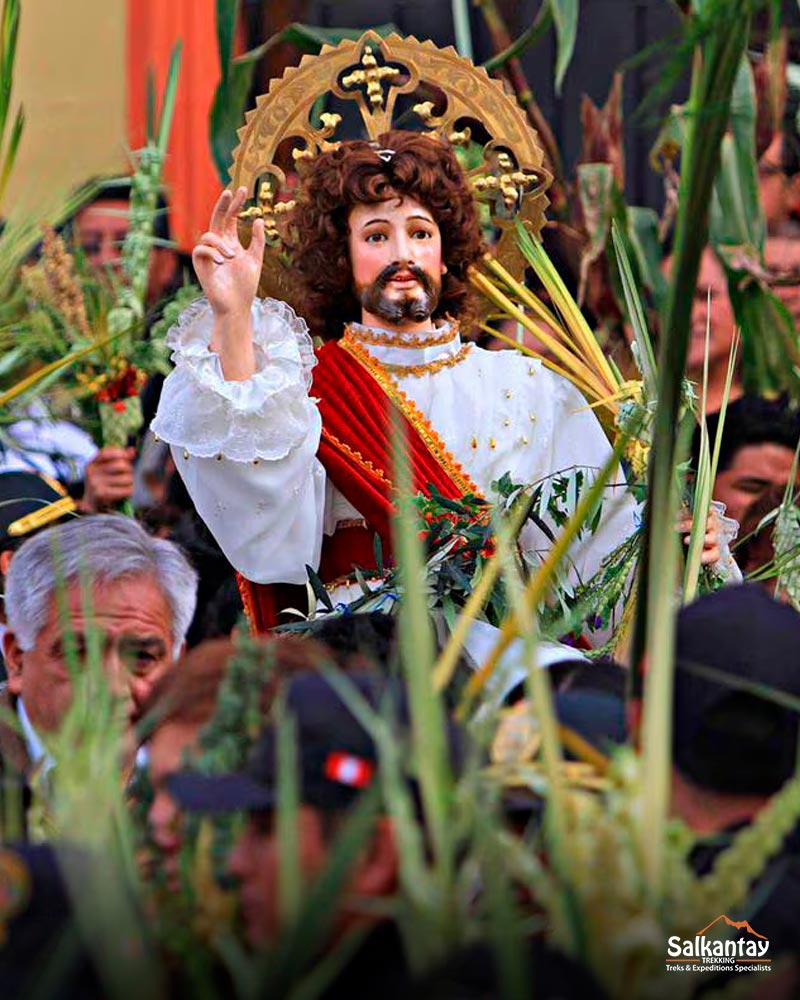
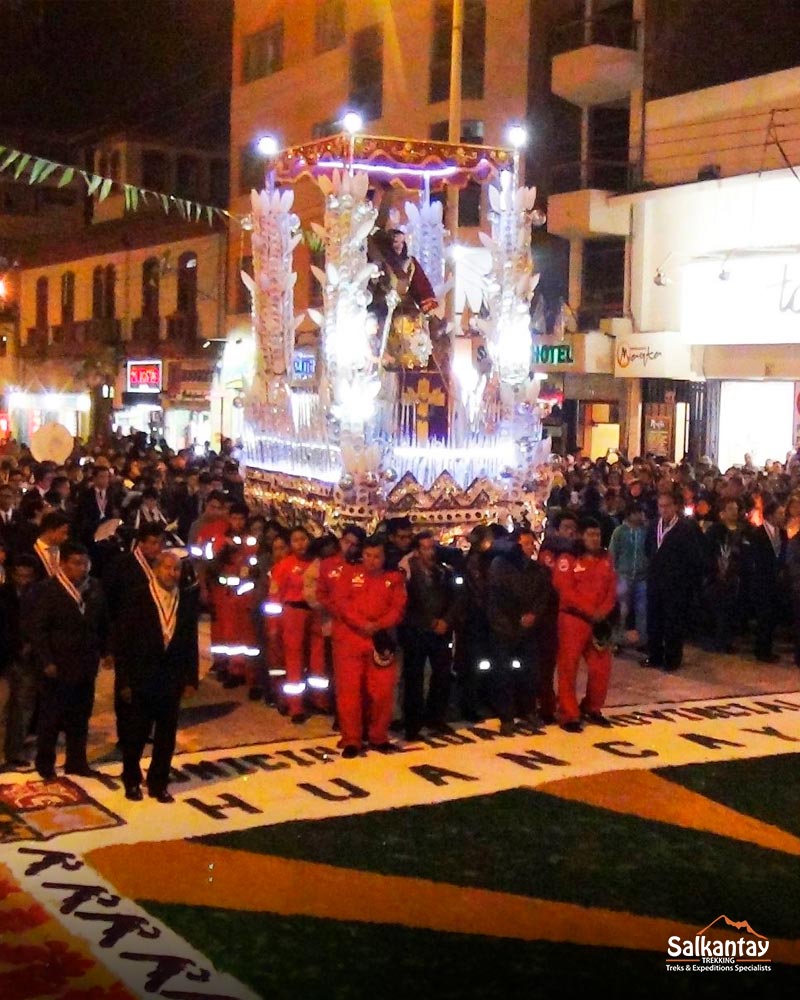
Top 7 Experiencias Imperdibles
- Taste Pachamanca cooked in earth ovens.
- Shop for textiles at the Crafts Market.
- Dance huaylash during Easter celebrations.
- Visit Wariwillka at sunset.
- Boat on Paca Lagoon.
- Photographs adorned colonial facades.
- Learn weaving from master artisans.
How to Get There
- Fly to Jauja (45min from Lima) + 35km to Huancayo.
- Scenic bus (7hrs through Andean landscapes).
- Drive via the Central Highway (for the adventurous).
Huancayo Awaits You With Open Arms!
Experience a Holy Week that blends:
- Catholic faith with Wanka tradition.
- Blessed Andean gastronomy.
- Living craftsmanship that captivates.
You may be interested in:
- Cusco Crafts: History, Tradition, and Creativity in the Heart of the Andes.
- Experience the Unique Holy Week in Cusco
- Cusco Festivities
- The Best Carnivals in PERU
- Carnivals in Cusco: A Celebration of Tradition and Joy
- Christmas and New Year’s in Cusco: An Unforgettable Experience in the Peruvian Andes


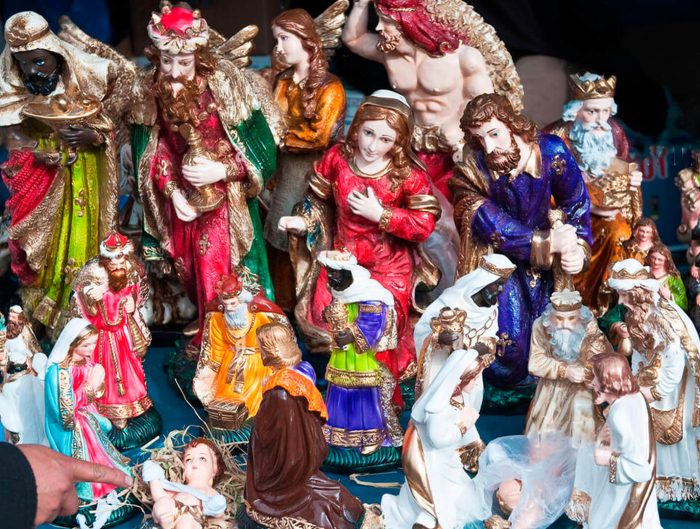
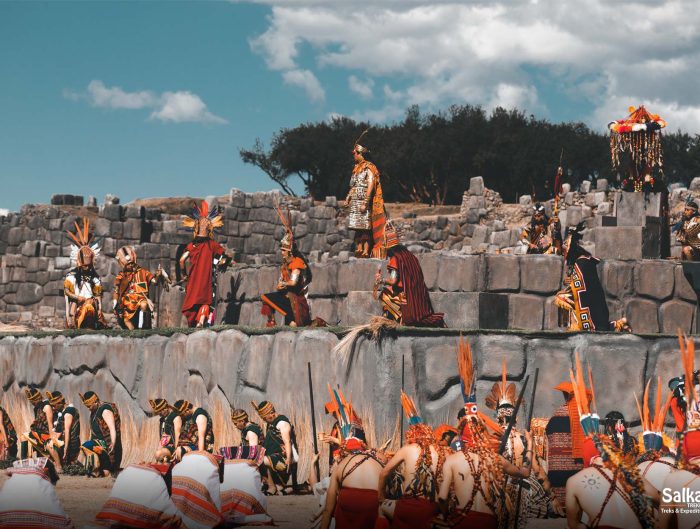
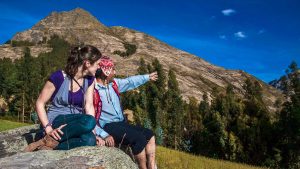
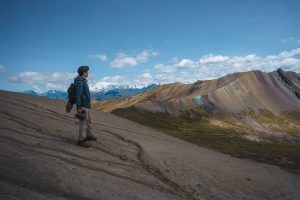
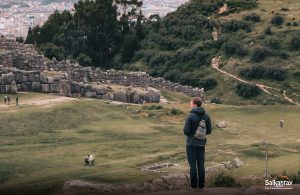
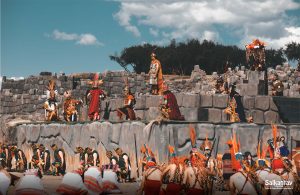
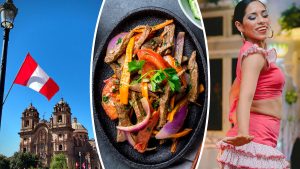

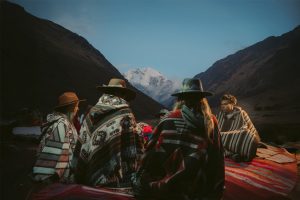
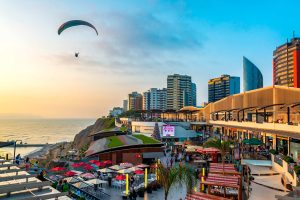
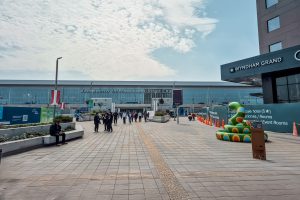
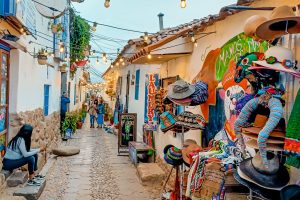
Leave A Reply